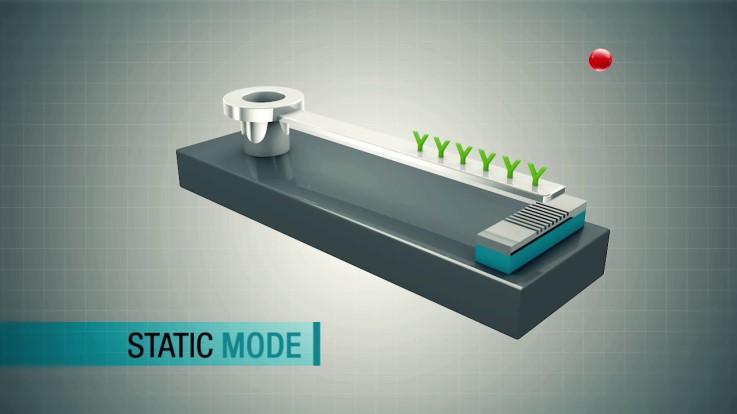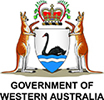 |
Australian National Fabrication Facility | |
| Latest News | ||
March 2014
An artificial nose (previously reported in our June 2013 issue) based on micro-electro- mechanical systems (MEMS) is moving towards commercialisation due to a partnership between the Microelectronics Research Group (MRG) at the University of Western Australia (UWA) and the company Panorama Synergy.
MEMS are microscopic devices with moving parts of size typically between 1 to 100 micrometres in size. The artificial nose technology is based on MEMS micro-cantilever sensors, here, tiny mechanical cantilevers are coated with an analyte which preferentially bonds to the substance to be detected. When the bonding occurs, surface stresses cause the micro-cantilever to bend, giving an indication that a sensing event has occurred (see Fig. 1, below).
 |
 |
| Figure 1: Static mode operation of a MEMS gas sensor. When the detection event occurs, surface stresses cause the micro-cantilever to bend. | |
One particular problem preventing the mass adoption of micro-cantilever sensors is the difficulty in measuring the bending of the micro-cantilever. Current read-out techniques to measure the bending of the micro-cantilever involve the use of either integrated electronic techniques based on capacitance or piezo-resistive effects; or external optical techniques such as the use of quadrant photodetectors for optical beam deflection.
Generally speaking, whilst electronic read-out techniques are capable of measuring the movement of large numbers of cantilevers, they can only do so with very low resolution. Alternatively, traditional, external optical read-out techniques can measure the bending of the micro-cantilever with very high resolution, but cannot be used to measure large numbers (>8) of micro-cantilevers. The use of multiple micro-cantilevers is necessary in this style of sensing to provide temperature compensation and better measurement statistics.
 |
Researchers at MRG have blended silicon photonics techniques with MEMS to develop a novel, integrated optical read-out technique which provides both optical measurement resolution and the ability to address large numbers of multiple cantilevers (Fig. 2, left). This is done by etching a diffraction grating beneath the micro-cantilever, creating an optically resonant cavity. Light travelling through the cavity is modulated by the movement of the micro-cantilever, providing an extremely sensitive measurement of the micro-cantilever bending. Over the course of the last few years, UWA PhD candidate Gino Putrino has demonstrated the ability of this technique to measure the movement of the micro-cantilever with pico- meter-scale accuracy, and has used this ability to measure the thermally stimulated Brownian motion of micro-cantilevers as small as 100 micrometres in length. The technology is the subject of four inter- national (U.S.) patent applications, one of which has already been allowed by the United States Patent & Trademark Office (USPTO) patent examiner. |
| Figure 2: Wavelength division multiplexing (WDM): a broadband laser is split using on-chip WDM to detect the movement of multiple micro-cantilever sensors. The micro-cantilevers can be coated with different functionalisations for detecting different chemicals. |
UWA has recently signed a licensing agreement with Panorama Synergy (PSY), granting them a minimum 50% share of revenues. On 8 November 2013, Gino presented the technology in California at the MEMS Executive Congress. The following week, the share price of PSY rocketed 4000% before settling back down. Prior to the presentation PSY had a market capitalisation of $1.3 million, at the time of writing, PSY has a market cap of $38.4 million. This rapid rise has not gone unnoticed in finance circles, and has been reported in mainstream media such as the Australian Financial Review, and the Finance News Network. Panorama Synergy was also one of the top ten most discussed stocks for several weeks on notorious Australian share market forum HotCopper.
This work continues to gain a lot of attention, and the research is currently being continued via an ARC Linkage Grant between UWA Microelectronics Research Group and Panorama Synergy.
Further reading available from these links:
Australian Financial Review - Panorama Synergy spikes 4000pc on HotCopper tip.
Panorama Synergy - ASX Media Release.
Story coutesy of Gino Putrino, Microelectronics Research Group, The University of Western Australia.




